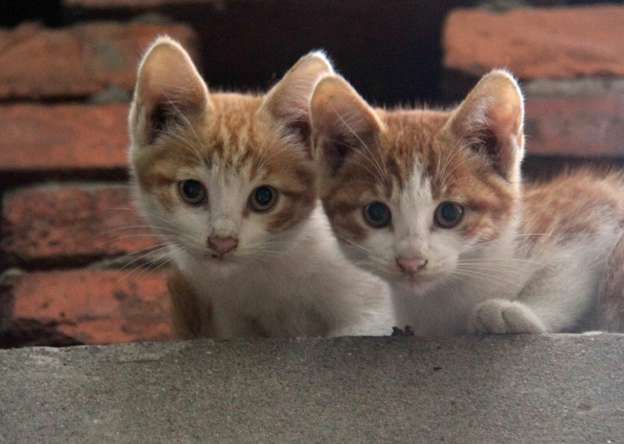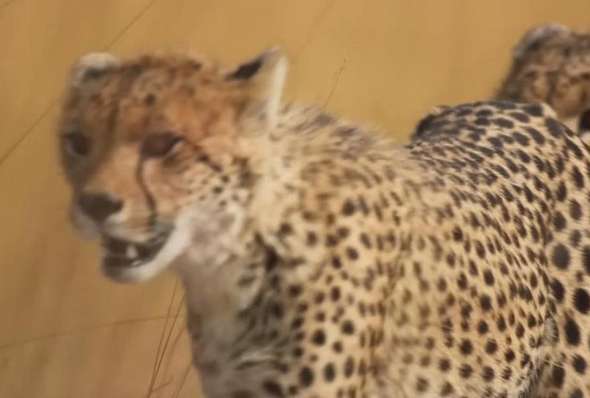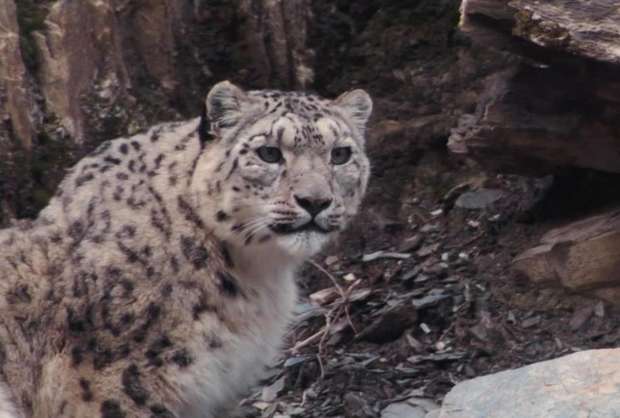"Big cats" usually refer to large cats. There are only a few animals in the world that can be called big cats. They are: lions, tigers, jaguars, cougars, leopards, and snow leopards. , cheetah.
Big cats give people a domineering feeling. They are strong in size and ferocious in character. They are the top predators in nature. For example, lions and tigers not only look more powerful, but their roars are also very shocking.
As the saying goes, "Lions roar in the wilderness and tigers roar in the mountains and forests." Research has found that a lion's roar can reach 114 decibels and spread over a very wide distance. Once a person is exposed to such a high decibel sound environment for a long time, permanent hearing damage will occur.

I don’t know if you have noticed that snow leopards, cheetahs, and cougars are all big cats, but they cannot make the same deafening roar as lions and tigers. But they are also cats, such as lions, tigers, leopards, etc., but they cannot purr like kittens.
Among the big cats, the snow leopard’s cry is the most special. It can neither roar nor purr. Its cry seems to be somewhere in between, and it sounds more special. strangeness.
Actually, do you know? These two sounds are actually opposites in cats and cannot appear in one animal at the same time.
The principle of big cat roaring
In life, people easily mistakenly think that the bigger the cat, the deeper and louder the sound it makes. It seems reasonable at first glance, but in fact it doesn't stand up to scrutiny. For example, the bullfrog weighs only a few kilograms, but it can make a sound like a cow.
In fact, the ability of big cats such as lions and tigers to roar is related to their vocal structure. To put it simply, the uniqueness of their vocal cords and hyoid bones determines their ability to roar.
The hyoid bone of these animals is less ossified and the vocal cords have a square structure, which means that their hyoid bones are more flexible and their vocal cords can stretch to a greater extent.

Researchers found through dissection that the sides of the lamina propria of roaring cats such as lions and tigers contain more fat and elastin. The tissue formed by fibers, on the other side, also has similar tissue formed by hyaluronic acid, fibrin, etc.
What is the use of this? Although sound is produced by the body's sound-producing structure, we all know that when the body makes sounds, the lungs have to bear a certain amount of pressure, especially when there are loud sounds like lions roaring and tigers roaring, the lungs will bear greater pressure. The inner side of the vocal cords is rich in fibrin and hyaluronic acid, which can provide good protection when the body makes sounds, so that the lungs do not need to bear so much pressure.
The healing "purr" sound
The square structure of the vocal cords can stretch to the greatest extent. Correspondingly, pumas, cheetahs, kittens, etc. cannot roar. In cats, the hyoid bone is highly ossified, and the structure formed by the vocal cords and the side walls of the vocal tract is triangular. As we all know, the triangle is the most stable structure, so the extent to which it can stretch is very low.
On the one hand, the flexibility of the hyoid bone is not high, and on the other hand, the vocal cords have poor extensibility. Naturally, these animals cannot roar.
Of course, these two sets of sound-producing mechanisms are quite complex. We can simply understand that when the air passes through the vocal tract, the hyoid bone vibrates at different frequencies, and the vocal cords stretch to different degrees. There will be a big difference in the sound.
The structure of the hyoid bone and vocal cords is destined to prevent some cats from making domineering roars like lions and tigers. However, it was a blessing in disguise. He was born unable to roar, but he was given a more healing "gurgling" sound.
Roaring and "gurgling" are two opposing sounds. The vocal cords of lions and tigers can roar, but they cannot "meow".
Scientific research has found that the "purr" sound produced by kittens is about 25 decibels, which is a relatively comfortable value. More importantly, this sound is helpful in promoting tissue regeneration and bone healing, and has a full healing function.

Unique Snow Leopard
Among cats, the snow leopard is the most special existence. The roar and the "purr" sound are like opposite existences. They will not appear on the same body at the same time, but it But they can not appear on the same body at the same time, such as Snow Leopard, that ""Unlucky guy", it can't roar or make a "gurgling" sound.
Listen carefully to the snow leopard's cry, it seems to be somewhere in between, like breathing heavily. That's exactly The existence of the snow leopard prevents people from simply distinguishing animals of the genus Leopard by whether they can roar, because it is the only one in the genus Leopard that cannot roar.
Existing cats are all descended from the original ancient carnivores. It evolved from cats in animals. Before entering the field of molecular science, people generally classified species based on external morphology and other characteristics. Snow leopards were first considered to be "monotypic animals", that is, they were classified as snow leopards genus.
Later, as people’s understanding continued to deepen, especially after entering the molecular field, scientists discovered that snow leopards are very closely related to tigers, so in the revised classification of cats, snow leopards were classified as Incorporated into the genus Leopard, the genus Snow Leopard was canceled at the same time.
Sound is very important to cats, and it is the most common carrier of signal transmission. In daily life, lions and tigers need to use Roaring sounds are used to declare one's sovereignty and warn similar species.
For example, lions will roar more frequently after taking over a pride of lions in order to frighten surrounding coveters. High decibels and wide transmission distance A growl is more effective than a "meow" sound.